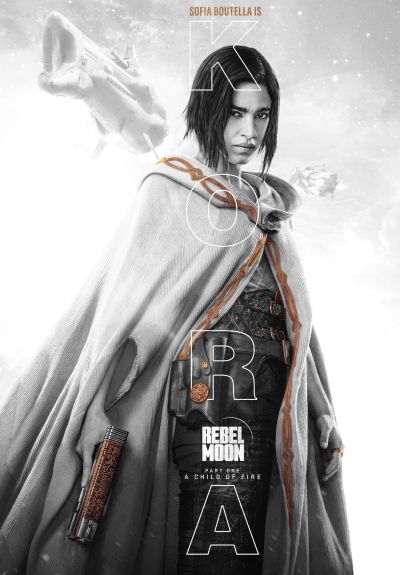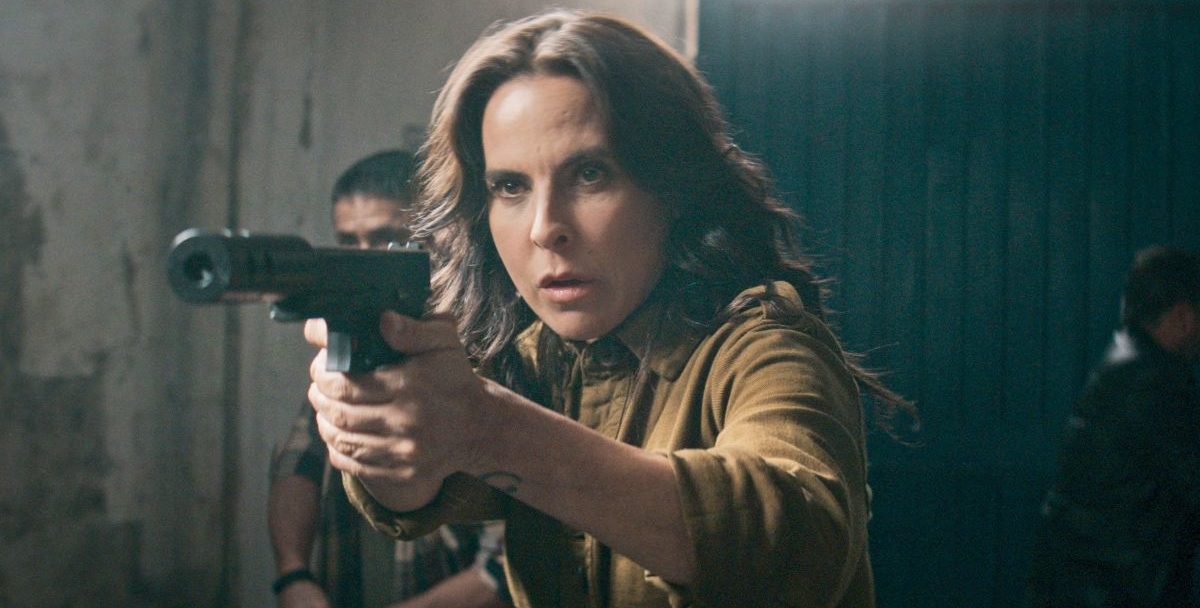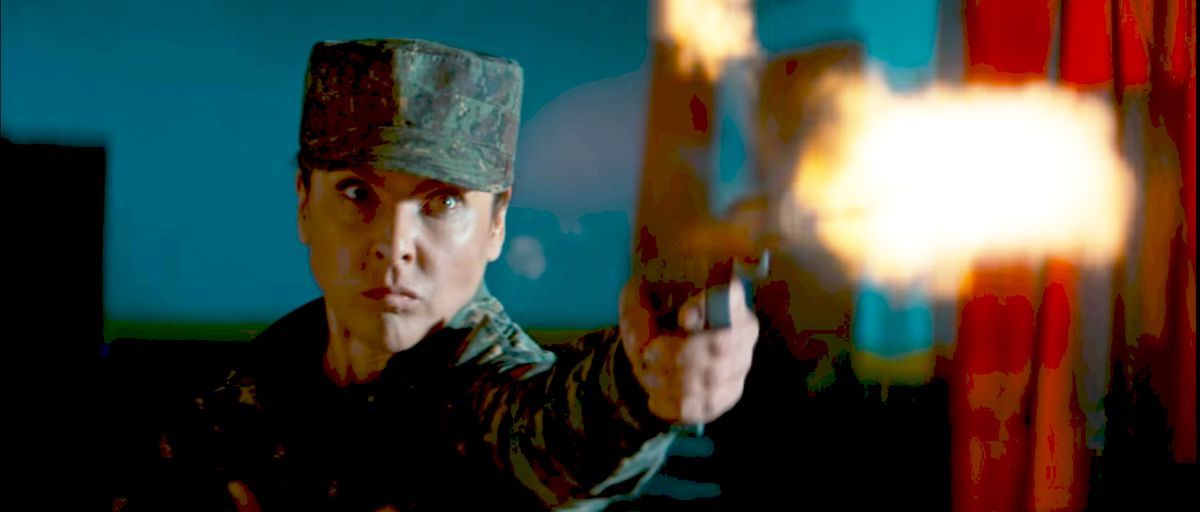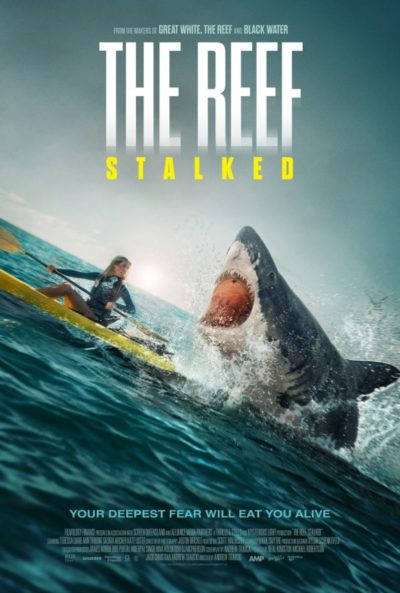Note: My previous reviews of this series had incorrect information on the series numbering, and about the relationship of this printing to the first one. That first printing had seven volumes. If Lincoln Square Books reprints all of the series, their edition will have six, because they combined the original Real Dangerous Girl and Real Dangerous Job (which form a single story arc) as Parts I and II of a single novel with the first title. However, they did NOT combine any of the later novels, which all have their original titles; the next two, including this one, were divided into Parts I and II to start with. I apologize to readers for the earlier misleading information; but a late correction is better than no correction!
Having read (and reviewed) the previous volumes in this action adventure series, all of which got high ratings from me, I was glad to follow along with this next installment. Most readers of this book will probably have read the earlier ones –and should have, since this series is one that absolutely needs to be read in order. (This review will contain some spoilers for the preceding book, though not for this one.) Likewise, most readers of this review will most likely have read my takes on the preceding volumes, so will already have a basic idea of Kim’s personality, family situation, and back history.) The main body of this story takes place on one day, mostly in a tense hostage situation, and Part I ends in a cliff-hanger in the very middle of that situation.
 The most obvious difference between the previous installments and this one is that we’re no longer in our familiar upstate New York setting. Landing on her feet at the conclusion of her previous adventure, our rough-edged heroine had wangled herself a job as chief of security for her deceased boss’ erstwhile newly minted partner, Mr. Karsh (whose business practices unfortunately aren’t any more ethical or strictly legal than the late Mr. Falcon’s, though he also aspires to a veneer of legitimacy). In the interim between the two books, his far-flung business enterprises have taken him to L.A. for an extended stay, so he’s re-located Kim and Donnie (I’d say she’s now at least 18, if not 19, and Donnie’s 12-13) there along with him. When our story opens, Kim’s making better money than before; she and Donnie can afford a better apartment, and Karsh’s gotten him into a private school that caters to special-needs kids. She’s thinking that their situation is looking up; but with her luck, it can go south very quickly. And then things get really hairy, when she finds herself, in a Karsh-owned equipment truck, in the middle of a late afternoon traffic jam on an elevated L.A. freeway, in which Donnie’s school bus is also stuck –and shooting and explosions start to happen.
The most obvious difference between the previous installments and this one is that we’re no longer in our familiar upstate New York setting. Landing on her feet at the conclusion of her previous adventure, our rough-edged heroine had wangled herself a job as chief of security for her deceased boss’ erstwhile newly minted partner, Mr. Karsh (whose business practices unfortunately aren’t any more ethical or strictly legal than the late Mr. Falcon’s, though he also aspires to a veneer of legitimacy). In the interim between the two books, his far-flung business enterprises have taken him to L.A. for an extended stay, so he’s re-located Kim and Donnie (I’d say she’s now at least 18, if not 19, and Donnie’s 12-13) there along with him. When our story opens, Kim’s making better money than before; she and Donnie can afford a better apartment, and Karsh’s gotten him into a private school that caters to special-needs kids. She’s thinking that their situation is looking up; but with her luck, it can go south very quickly. And then things get really hairy, when she finds herself, in a Karsh-owned equipment truck, in the middle of a late afternoon traffic jam on an elevated L.A. freeway, in which Donnie’s school bus is also stuck –and shooting and explosions start to happen.
That brings us to another difference, or set of differences, from the previous books. Here, the unity of time and location is much tighter. Events are also, in a sense, more straightforward. True, Kim doesn’t have a clue why a gaggle of heavily armed thugs have set off vehicle explosions that block 50 or 60 cars between them, with no escape, and neither do we as readers; Jeter will disclose their leader’s plan and motivation only very gradually. But figuring out who the enemy is here isn’t going to be a problem; they’re toting their assault rifles quite openly. There are also a number of scenes and events here to which Kim isn’t privy at the time. Given that she’s our first-person narrator, that’s a challenge to pull off, but Jeter does it successfully. He’s already used the technique, in previous books, of her describing a scene the way she imagines it went. (But as Kim says, “The thing about my imagination, though –I’m not usually wrong about whatever I come up with. Kind of a gift, that way.” :-) )
Here, he just has to use it a great deal more. Finally, there’s not a lot of moral ambiguity or grey areas in this tale; anybody who’s not morally brain-dead can recognize that the perpetrators aren’t doing good things, and Kim doesn’t need to agonize over whether it’s right to try to mess up their plans and hopefully get Donnie to safety -and herself and maybe others as well, if she’s lucky. That’s pretty much a given. The real question is whether she can rescue anybody. (The cover art here is highly misleading; Kim never has a pistol in her hand in this book.) Her treasured .357 is in her shoulder bag in her boss’ car (long story), and the head thug quickly relieved her of the Ladysmith in her thigh holster. So she’s unarmed, and not blessed with a physique that gives her much advantage in hand-to-hand combat, nor martial arts skills. But she does have guts, smarts, and determination; and her colleague Elton (whom we met in the previous book), who’s with her in the truck, has the same qualities.
The action-adventure aspect of the story is more prominent here than in the previous books (though Kim herself gets to display her chops only towards the end –she’ll more than make up for that, however!), and is presented with a good deal of tension, suspense, and excitement, punctuated by explosions and mayhem. (Hollywood disdains to adapt indie or small-press books as films; that’s their loss in this case, because the narrative has a highly cinematic quality. It would be tailor-made for adaptation as an action film, and would probably be very popular at the box office.) Strong characterization is an asset, as always in this series; Donnie in particular comes into his own here (and we actually learn what his medical condition is; it’s esophageal atresia, and compounded in his case with complications from surgical infection, it’s life-threatening). And don’t sell him short in a crisis, either; yeah, his legs are useless, but his big sister isn’t the only sibling in that family who’s got fighting spirit…. Bad language is restrained (no obscenity, and not much religious profanity), and there’s no sexual content; Jeter’s prose is vivid, and the narrative is fast-paced.
Continuity/editing issues, as in the previous book, are the one significant flaw here. An important plot point results from a scuffle that supposedly took place earlier; but in the earlier part of the book that describes that encounter, there was clearly no scuffle at all. At one point, Kim refers to being aware of something she actually couldn’t have known until later. Most glaringly, a character who’s shot dead with a close-range pistol bullet between the eyes appears two pages later, walking, talking and menacing people. In fairness, I had to deduct a star for those issues, but they didn’t keep me from really liking the book. (All of them could be fixed with fairly slight editing.) For series fans, it’s a must-read; and I think most fans of clean action-adventure, especially those who appreciate a protagonist from the distaff side, would greatly like this series if they’d try it.
Author: K. W. Jeter
Publisher: Lincoln Square Books; available through Amazon, both for Kindle and as a printed book
A version of this review previously appeared on Goodreads.
 To bring out one of my go-to phrases, if I was eleven years old, and hopped up off my face on candy-floss, this would probably be one of my favorite movies. Instead, it’s the kind of film which apparently caused my brain to shut off as some kind of defense mechanism. I’m not kidding. Ten minutes into my first viewing attempt, I suddenly fell asleep. I think my mind may have experienced the cerebral equivalent of a blue screen of death and ran out of memory, forcing a shutdown. For this is just an insane overload of a movie, all the more so considering it was a labour of love, assembled over a period of multiple years.
To bring out one of my go-to phrases, if I was eleven years old, and hopped up off my face on candy-floss, this would probably be one of my favorite movies. Instead, it’s the kind of film which apparently caused my brain to shut off as some kind of defense mechanism. I’m not kidding. Ten minutes into my first viewing attempt, I suddenly fell asleep. I think my mind may have experienced the cerebral equivalent of a blue screen of death and ran out of memory, forcing a shutdown. For this is just an insane overload of a movie, all the more so considering it was a labour of love, assembled over a period of multiple years.




 Despite critical derision, this is actually perfectly serviceable pulp SF. Sure, it’s derivative as hell. But the critics getting all huffy about the similarities to Star Wars seem to have forgotten George Lucas only made his film, after failing to acquire the rights to Flash Gordon. This is Snyder’s equivalent to The Fifth Element, in that it’s a long-gestating SF idea, originally conceived well before he became a director. “The Dirty Dozen in space” was the high concept, although there is no denying the SW similarities, especially in the early going. I mean, young orphan on a backwater farming planet gets sucked in to galaxy-hopping adventures, joining a rebellion against an evil empire? Yeah, a little more originality would be welcome.
Despite critical derision, this is actually perfectly serviceable pulp SF. Sure, it’s derivative as hell. But the critics getting all huffy about the similarities to Star Wars seem to have forgotten George Lucas only made his film, after failing to acquire the rights to Flash Gordon. This is Snyder’s equivalent to The Fifth Element, in that it’s a long-gestating SF idea, originally conceived well before he became a director. “The Dirty Dozen in space” was the high concept, although there is no denying the SW similarities, especially in the early going. I mean, young orphan on a backwater farming planet gets sucked in to galaxy-hopping adventures, joining a rebellion against an evil empire? Yeah, a little more originality would be welcome.  A decade after the splattery joy which was
A decade after the splattery joy which was  Carla (Williams) and her boyfriend Daniel (Davis) are all set for a nice weekend in the mountains. Unfortunately, the snowmobile trip runs into difficulty, in particular coming in the shape of a pair of cartel assassins. What, you may ask, are a pair of cartel assassins doing half-way up a snowy mountain in [I’m guessing] the Colorado Rockies? Good question. I’m glad you asked. They are after a robber who made the ill-advised decision to rob a bar which was a front for their organization. He’s now hiding out, half-way up the aforementioned snowy mountain, in the belief he’s safe. Turns out not to be the case.
Carla (Williams) and her boyfriend Daniel (Davis) are all set for a nice weekend in the mountains. Unfortunately, the snowmobile trip runs into difficulty, in particular coming in the shape of a pair of cartel assassins. What, you may ask, are a pair of cartel assassins doing half-way up a snowy mountain in [I’m guessing] the Colorado Rockies? Good question. I’m glad you asked. They are after a robber who made the ill-advised decision to rob a bar which was a front for their organization. He’s now hiding out, half-way up the aforementioned snowy mountain, in the belief he’s safe. Turns out not to be the case. ★★★
★★★ There are quite a lot of familiar faces for this one. There’s the long-running relationship between Teresa and Russian mobster, Oleg Yosikov (Gil). This is somewhat reflected in the love triangle of her daughter, now very much her own young woman. Sofia has to decide between Oleg’s son, Fedor, and street-kid Mateo Mena. He rescues Sofia from a sticky situation, and those who want to use Sofia to force her mother into compliance with their wishes. There’s also faithful sidekick Batman, who has been with Teresa since the beginning. On the other side, as well as her ex-husband, whose power is now grown to such an extents as to be a real threat, there’s long-running DEA nemesis Ernie Palermo. He brought Teresa in, and is very keen for her to serve the rest of her eighty-five year prison sentence.
There are quite a lot of familiar faces for this one. There’s the long-running relationship between Teresa and Russian mobster, Oleg Yosikov (Gil). This is somewhat reflected in the love triangle of her daughter, now very much her own young woman. Sofia has to decide between Oleg’s son, Fedor, and street-kid Mateo Mena. He rescues Sofia from a sticky situation, and those who want to use Sofia to force her mother into compliance with their wishes. There’s also faithful sidekick Batman, who has been with Teresa since the beginning. On the other side, as well as her ex-husband, whose power is now grown to such an extents as to be a real threat, there’s long-running DEA nemesis Ernie Palermo. He brought Teresa in, and is very keen for her to serve the rest of her eighty-five year prison sentence.
 If I were Ella Balinska, I’d be having a word with my agent. After seeing her major Hollywood career begin with the embarrassing failure of the
If I were Ella Balinska, I’d be having a word with my agent. After seeing her major Hollywood career begin with the embarrassing failure of the  She’s reluctant to bring him anywhere near the sybaritic conditions that await them; but although he’s able to look after himself for awhile if he needs to (and has, at times), as he pointed out, Child Protective Services knows she’s landed this job and won’t look kindly on him being left to his own devices for this long. (And she doesn’t plan on letting him participate in any drunken orgies!) Knowing the kind of intense searches today’s airplane travelers are subjected to, she’s opted not to bring along a gun. But, hey, it’s not as if any danger is likely to present itself on this gig, right? (I was reminded of the Robert Burns poem about “best laid plans….”) On the flight, Donnie strikes up an acquaintance with Mavis, a full-scholarship anthropology student who’s headed for Meridien on her department’s nickel, not to party but to do research, and who’s (like him) more than a little tech-savvy.
She’s reluctant to bring him anywhere near the sybaritic conditions that await them; but although he’s able to look after himself for awhile if he needs to (and has, at times), as he pointed out, Child Protective Services knows she’s landed this job and won’t look kindly on him being left to his own devices for this long. (And she doesn’t plan on letting him participate in any drunken orgies!) Knowing the kind of intense searches today’s airplane travelers are subjected to, she’s opted not to bring along a gun. But, hey, it’s not as if any danger is likely to present itself on this gig, right? (I was reminded of the Robert Burns poem about “best laid plans….”) On the flight, Donnie strikes up an acquaintance with Mavis, a full-scholarship anthropology student who’s headed for Meridien on her department’s nickel, not to party but to do research, and who’s (like him) more than a little tech-savvy. The most obvious difference between the previous installments and this one is that we’re no longer in our familiar upstate New York setting. Landing on her feet at the conclusion of her previous adventure, our rough-edged heroine had wangled herself a job as chief of security for her deceased boss’ erstwhile newly minted partner, Mr. Karsh (whose business practices unfortunately aren’t any more ethical or strictly legal than the late Mr. Falcon’s, though he also aspires to a veneer of legitimacy). In the interim between the two books, his far-flung business enterprises have taken him to L.A. for an extended stay, so he’s re-located Kim and Donnie (I’d say she’s now at least 18, if not 19, and Donnie’s 12-13) there along with him. When our story opens, Kim’s making better money than before; she and Donnie can afford a better apartment, and Karsh’s gotten him into a private school that caters to special-needs kids. She’s thinking that their situation is looking up; but with her luck, it can go south very quickly. And then things get really hairy, when she finds herself, in a Karsh-owned equipment truck, in the middle of a late afternoon traffic jam on an elevated L.A. freeway, in which Donnie’s school bus is also stuck –and shooting and explosions start to happen.
The most obvious difference between the previous installments and this one is that we’re no longer in our familiar upstate New York setting. Landing on her feet at the conclusion of her previous adventure, our rough-edged heroine had wangled herself a job as chief of security for her deceased boss’ erstwhile newly minted partner, Mr. Karsh (whose business practices unfortunately aren’t any more ethical or strictly legal than the late Mr. Falcon’s, though he also aspires to a veneer of legitimacy). In the interim between the two books, his far-flung business enterprises have taken him to L.A. for an extended stay, so he’s re-located Kim and Donnie (I’d say she’s now at least 18, if not 19, and Donnie’s 12-13) there along with him. When our story opens, Kim’s making better money than before; she and Donnie can afford a better apartment, and Karsh’s gotten him into a private school that caters to special-needs kids. She’s thinking that their situation is looking up; but with her luck, it can go south very quickly. And then things get really hairy, when she finds herself, in a Karsh-owned equipment truck, in the middle of a late afternoon traffic jam on an elevated L.A. freeway, in which Donnie’s school bus is also stuck –and shooting and explosions start to happen. This is not to be confused with the rather higher profile i.e. it’s available on Netflix, Japanese film with the same title, made the same year, and covering a not dissimilar theme. Both are about a woman who is prepared to commit murder, in order to save their best friend from an abusive relationship. However, after the killing in question, the films take divergent paths. The Japflix version becomes a road-trip movie, with the killer and her friend going on the run. This, however, focuses heavily on the killer, whose already fragile mental state falls apart completely, after she discovers that things weren’t quite as she had been led to believe. It’s not her first time at the homicide rodeo either.
This is not to be confused with the rather higher profile i.e. it’s available on Netflix, Japanese film with the same title, made the same year, and covering a not dissimilar theme. Both are about a woman who is prepared to commit murder, in order to save their best friend from an abusive relationship. However, after the killing in question, the films take divergent paths. The Japflix version becomes a road-trip movie, with the killer and her friend going on the run. This, however, focuses heavily on the killer, whose already fragile mental state falls apart completely, after she discovers that things weren’t quite as she had been led to believe. It’s not her first time at the homicide rodeo either. This is a sequel to Traucki’s 2010 film, The Reef, whose synopsis reads: “A sailing trip becomes a disaster for a group of friends when the boat sinks and a white shark hunts the helpless passengers.” I haven’t seen it, yet based on that, I’m not sure I need to. Replace “sailing” with “kayaking”, and you’re more or less here. Perhaps lob in a bit borrowed from
This is a sequel to Traucki’s 2010 film, The Reef, whose synopsis reads: “A sailing trip becomes a disaster for a group of friends when the boat sinks and a white shark hunts the helpless passengers.” I haven’t seen it, yet based on that, I’m not sure I need to. Replace “sailing” with “kayaking”, and you’re more or less here. Perhaps lob in a bit borrowed from